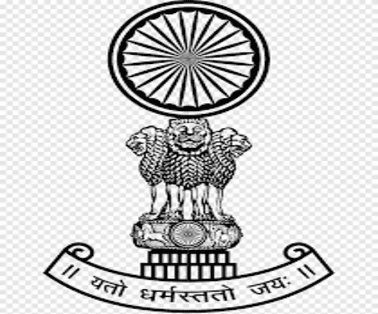The President of India, Droupadi Murmu, on November 26, advocated the creation of an All India Judicial Service exam for the selection of judges from across the country.
Key Points on All India Judicial Service
- Murmu noted that an All India examination would provide opportunities for talented candidates from diverse backgrounds to become judges.
- She made these remarks at the inauguration of the Constitution Day celebrations at the Supreme Court (SC).
- Earlier this year, the then Law Minister, Kiren Rijiju, in a parliamentary response, emphasized the government’s view that a properly framed All India Judicial Service is crucial to strengthen the overall justice delivery system.
- This would allow for the induction of suitably qualified fresh legal talent selected through a proper all-India merit selection system, addressing issues of social inclusion by ensuring suitable representation for marginalized and deprived sections of society.
What is AIJS?
- AIJS is a proposed centralized recruitment system for judges at the level of additional district judges and district judges across all states.
- Originating from Law Commission reports in 1958 and 1978, AIJS seeks to address structural issues like varying pay, faster vacancy filling, and standardized nationwide training.
- If the Rajya Sabha declares through a resolution, supported by at least two-thirds of its present and voting members, that it is necessary or expedient to create a service in “national interest,” the Parliament “may by law can create AIJS
- Essentially, the AIJS seeks to centralise the recruitment of judges at the level of additional district judges and district judges for all states.
- Just as the Union Public Service Commission (UPSC) conducts a central recruitment process and assigns successful candidates to cadres, the recruitment of judges of the lower judiciary is being proposed to be made central, following which they’ll be assigned to states.
Constitutional Backing for AIJS
- Article 312 of the Constitution provides for the establishment of an All-India Judicial Service (AIJS), along the lines of the central civil services.
- However, Article 312 (2) states that the AIJS cannot include any post inferior to that of a district judge, as defined in Article 236.
- A district judge can include a city civil court judge, additional district judge, joint district judge, assistant district judge, chief judge of a small cause court, chief presidency magistrate, additional chief presidency magistrate, sessions judge, additional sessions judge, and assistant sessions judge
Historical Context and Need for AIJS
- The idea of a centralised judicial service was first deliberated in the Law Commission’s 1958 ‘Report on Reforms on Judicial Administration’.
- It was to ensure an efficient subordinate judiciary to address structural issues such as varying pay and remuneration across states, filling vacancies faster, and ensuring standard training nationwide.
- A statutory or constitutional body such as the UPSC to conduct a standard, centralised exam to recruit and train judges was discussed.
- The idea was proposed again in the Law Commission Report of 1978, which discussed delays and arrears of cases in the lower courts.
- In 2006, the Parliamentary Standing Committee on Personnel, Public Grievances, Law, and Justice, in its 15th Report, supported the idea of a pan-Indian judicial service and also prepared a draft bill.
Present System Of Selection
- Articles 233 and 234 of the Constitution of India deal with the appointment of district judges and place it in the domain of the states.
- The selection process is conducted by the State Public Service Commissions and the concerned High Court, since HCs exercise jurisdiction over the subordinate judiciary in the state.
- Panels of HC judges interview candidates after the exam and select them for appointment.
- All judges of the lower judiciary up to the level of district judges are selected through the Provincial Civil Services (Judicial) exam.
- PCS (J) is commonly referred to as the judicial services exam.
Need For All India Judicial Service
- Huge vacancy of judges and delay in recruitment
- Dearth of good quality judicial officers
- Lack of finances with state governments
- Lack of specialized state training institutions
- Subjectivity in the recruitment process
Concerns Regarding AIJS
- It would infringe upon the federal structure and the autonomy of the states and the high courts, who have the constitutional right and responsibility to administer the subordinate judiciary.
- It would create a conflict of interest and a dual control over the judges, who would be accountable to both the central and the state governments.
- It would disregard the local laws, languages, and customs of the different states, which are essential for the effective functioning of the judiciary.
- It would affect the morale and motivation of the existing judicial officers, who would be deprived of the opportunities and incentives for their career advancement
To Download Monthly Current Affairs PDF Click here
Click here to get a free demo
Everything About CLAT 2026



